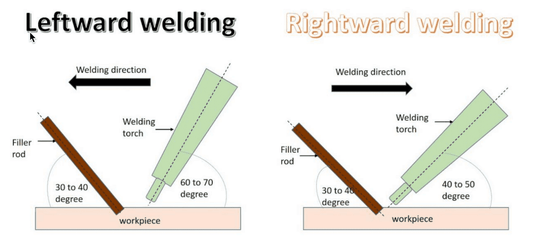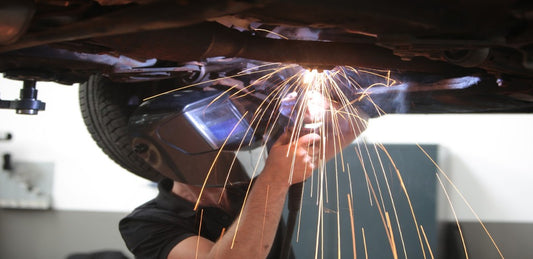FAQ About Titanium Exhaust Welding
This article briefly discusses frequently asked questions about welding titanium. It covers topics such as how to weld titanium, welding methods, and technical. For more detailed information, you can visit our other articles.
Q1: What is titanium exhaust welding?
A: Titanium is a perfect choice for exhaust systems. It is lightweight, has a high strength-to-weight ratio, corrosion-resistant, and withstands high temperatures. Titanium exhaust welding refers to the process of joining titanium parts or titanium components in exhaust systems. It can create a high performance and enhance the vehicle's overall efficiency. Another critical point is it can prolong exhaust system service life.
Q2: Why is titanium used in exhaust systems?
A: Titanium is an ideal material for use in exhaust systems. Titanium can withstand high temperatures up to 600°C (1112°F) without losing strength or corrosion resistance. Especially for racing applications, weight reduction and increased strength are also important factors. Titanium has a high strength-to-weight ratio. It means they can withstand high pressures without weighing down the exhaust system.
Q3: What are the benefits of titanium exhaust systems?
A: Titanium exhaust systems have many advantages. They are weight-reduced, performance-improved, durability-enhanced, and corrosion resistance. The system can increase power, improve fuel efficiency, and make more aggressive exhaust sounds. Titanium exhaust systems are usually considered a premium upgrade for car enthusiasts because they look good and are exclusive.
Q4: Can I Weld on Titanium?
A: Titanium welding is easy, like stainless steel or nickel alloys. Its unique properties, like high melting point and reactivity, should be considered. Before starting welding, preparing the surface to remove all impurities is crucial. To ensure the weld is strong and flexible, protect the front and back of the titanium joint sufficiently. Filler rods, heat control, and post-weld treatment are critical in welding titanium. You can visit How to Weld Titanium and Welding Processes for more information.
Q5: Can I MIG Weld Titanium?
A: Yes! Even though most welders prefer TIG welding, you can use MIG to weld titanium. MIG welding, also known as Gas-Metal Arc Welding Welding (GMAW), is used in manufacturing and repairing automobiles. MIG is relatively fast, efficient, and easy to learn. It is a suitable method for welding titanium with a thickness greater than 3 mm. If you use MIG welding on titanium that is less than 3 mm, the metal is likely to be burned. MIG welding is an economical option for titanium with a thickness of 12.7mm and above. Get more in Two Types of Titanium Welding Processes.
Q6: Can I Weld Stainless Steel to Titanium?
A: Welding stainless steel to titanium will be a challenge. Stainless steel and titanium have different melting points, thermal conductivity, and mechanical properties. It is a risk of metallographic structure transformation. It will weaken the welding joint. Those differences and issues can fail to achieve great and reliable welding. So, it is not recommended to weld stainless steel to titanium directly. To solve this problem, you can use our Half Titanium Half Stainless Steel V-band Clamp Assembly to build a unique exhaust.
Q7: Can I use stick welding for titanium?
A: No. Stick welding, also known as shielded metal arc welding (SMWA), cannot be used to weld titanium. Titanium is a very reactive metal. It requires a shielding gas to protect the weld pool from air and contaminants. Stick welding uses a consumable electrode to provide shielding gas and fluxing agents. The gas that comes from the burning flux of the electrode cannot shield as expected.
Additionally, stick welding generates a high heat input. It can lead to a heat-affected zone in titanium. It will have a severe impact on titanium properties and performance. We recommend using TIG welding to weld titanium.
Q8: Is shielding gas necessary in titanium exhaust welding?
A: Shielding gas plays a crucial role in titanium exhaust welding. Titanium is a highly reactive metal. Oxygen and nitrogen will permeate into titanium at temperatures exceeding 400°C.
It enhances the tensile strength but leads to embrittlement of the workpiece. The welders often use argon gas to shield the weld and prevent contamination to ensure a strong weld. You should protect the molten weld pool and cover the back side of the weld. We strongly recommend using tig back purging plugs. They can hold that precious argon behind your welds instead of leaking out around the alu-foil.
Q9: Is preheating necessary for titanium exhaust welding?
A: Preheating is not commonly required for titanium exhaust welding. Preheating is used to raise the temperature of the base metal before welding. Preheating is necessary only if there is a suspicion of moisture. We can use a gas torch to heat the weld surface to approximately 66°. It will remove moisture. We recommend shielding gas until welding is completed and the workpiece cools below 400°C.
Q10: Is post-weld heat treatment necessary for titanium exhaust welding?
A: Post-weld heat treatment is not commonly required for titanium exhaust welding. Post-weld heat treatment involves subjecting the welded joint to controlled heating and cooling cycles after welding. It is typically employed in situations that require high joint strength and flexibility. For titanium exhaust systems, post-weld heat treatment is often optional.
Q11: What safety precautions should be implemented during titanium welding?
A: When welding titanium exhaust systems, follow safety precautions. It includes wearing appropriate PPE such as gloves, goggles, and welding helmets during welding. It's essential to wear nitrile gloves. Chlorine contained in your sweating hands can cause localized corrosion. During welding, ensure enough ventilation to remove fumes and gases. Additionally, the welder should know the safety guidelines the welding equipment provides.
No comments









0 comments